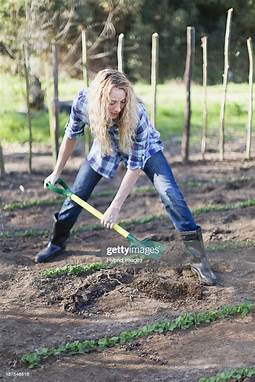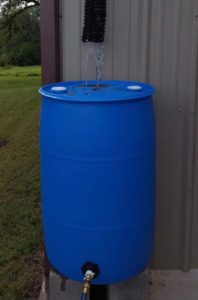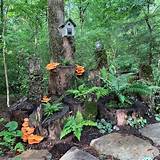
Somervell County Master Gardening Association Presents

by grecker

by grecker
January 9, 2023, 6pm – 7pm
Somervell Citizen Center
Speaker Morgan McBride will have a presentation on Trees, followed by time available for Question and Answers

by grecker
by grecker
by grecker
Let’s Get Physical, Physical!

You got that right! Gardening is most definitely physical! Join the Somervell Master Gardeners on Monday, June 20, 2022 at 6:30pm at the Somervell County Citizens Center, 209 SW Barnard, as we host Physical Therapist Caleb Melde. Caleb will be demonstrating – and we will be doing – specific exercises and movements that support the positions and tasks that are required for gardening. This practice can help alleviate injuries and support recovery from our gardening chores.
This will be an active class, and we will be following along with Caleb as he demonstrates the movements. Exercises bands will be used, so if you have your own, please bring them as we will have only a few to share.
by grecker

I need to use you another day!
And the best way to do that is with a Rainwater Harvesting System.
Come and join Texas A&M AgriLife Extension and Somervell County Master Gardeners Monday evening, May 16 at 5:30pm at the Somervell Citizens Center, 209 SW Barnard, Glen Rose for dinner, and learn how to get started with your own rainwater catchment system. Sinclair Newby with Prairielands Groundwater Conservation District will show all the benefits of and methods for starting a variety of rainwater catchment and collection systems. She will discuss raingardens and how native plants can aid in the preservation of our precious rainwater. Sinclaire will demonstrate how to construct a simple cost effective rain barrel, and one lucky participant will take home their own 55 gallon rain barrel to get started at home!
Please RSVP to 254-897-2809
Cost $15

by grecker
by grecker

The Somervell County Master Gardeners would like to extend a heart felt thank you for a very successful 2022 Spring Plant Sale. Even before the day of the sale, the local merchants were so generous to allow us to post flyers advertising our event. Thank you so much! We are also very grateful to the Glen Rose Methodist Church for allowing us to transform their parking lot into a plant nursery for the day! It is said the most important thing when trying to sell is location, location, location, and we had the best! A huge thank you to the Somervell County Sheriffs who spent time the night before the sale patrolling the site and ensuring everything, including some of our members, were safe and undisturbed. Hats off to you! If you attended the sale you were sure to notice the excellent service of the Somervell County 4-H kids. They gave up some of their free time to assist the Master Gardeners and the shoppers. You all went above and beyond, and we were so happy to hear so much positive feedback! Of course, great kids come from great families and leaders, so thank you to Jana Reynolds and the 4-H families. You have reason to be proud. We were also fortunate to have help and support from two of Tarrant County’s finest Master Gardeners, Margaret Shuping and Avice Ward, who worked the “Ask a Master Gardener” booth. And, last but certainly not least a big SCMG thank you to our customers! We hope you enjoyed the morning as much as we did.
by grecker
Stumperies
Tessa Ownbey
Somervell County Master Gardener

I am a big fan of “down-and-dead.” And not just on TV! No, I am using the term as a naturalist would, referring to fallen logs, branches, leaves, and detritus of all kinds. I love a good snag, as well. What a wellspring of life a snag is! So, it should come as no surprise that my garden sports a stumpery.
The Victorians were a creative bunch. From them we get such things as Paris Green, jewelry made of living insects which wandered around women’s dresses with jewels glued to their backs, hair bracelets, stuffed birds and feathers in hats, volumes A and B of the first Oxford English Dictionary, cemetery picnics, seaweed scrapbooking, anthropomorphic taxidermy, diatom arranging, beetling, the language of flowers, terrariums (originally called Wardian cases, after their creator, Nathaniel Bagshaw Ward), croquet… and stumperies.
The first known stumpery was created in 1856 by artist and gardener Edward William Cooke. He saw a pile of debris from land clearing and rather than finding a way to dispose of it, instead artfully arranged it and planted ferns, the collecting of which was the current Victorian trend du jour. Apparently, stumperies are currently enjoying a resurgence, so my little tumble of debris is “on point,” or whatever the current synonym for “on point” is.
A stumpery is built like a rock garden. Instead of rocks, we use logs, stumps, and fallen limbs. The point of my particular stumpery is to encourage the insects that utilize “down-and-dead,” and in particular, the native bees and wasps which use chambers in wood to lay their eggs. (Many more use holes in the ground, and of course I also have areas for that elsewhere.) These bees and wasps, as adults, then pollinate my garden. Stumperies are incredibly advantageous to gardeners!
Creating my stumpery was simple. When I erected the deer fence around my “official” gardening area, in my mind I envisioned my very organized vegetable garden to the east and my very informal pollinator wildscape to the west. On the west side of the garden there happened to be a snag about six feet tall, surrounded by some of the debris from its decomposition: another section of trunk and many branches. These I piled up in a way that was pleasing to my eye. I’d like to claim I piled them artistically, but I don’t think I can go that far.
Then, I mapped out where my meandering pathways would travel through the wildscape. I edged all these pathways with limestone leftover from digging the foundation of the house. This left me with several rock-bordered planting areas, one of which included the snag and debris.
In the years since, I have added plantings. My stumpery sports Gregg’s Mistflower, Autumn Sage, Giant Salvia, Mexican Petunias, Black-Eyed Susans, Mexican Hats, Flame Acanthus and a Blind Prickly Pear. I have even added another tree stump, which I found back in my woods. It has a fantastical shape, and reminded me of a fairy castle. And so, my stumpery now includes a fairy garden at one end. If you sneak up on me on the right day, you are apt to find me furtively (because I am a grownup, for God’s sake, and feel guilty about playing dolls) making and/or arranging fairy dolls and accessories for it.
As one does, each year I change or improve something in my stumpery. Although I try to stick to native plants, a couple of years ago I came across Giant Alliums at the Ace Hardware in Stephenville. They don’t seem to overwinter well, but I love their fantastical proportions, huge purpley-blue orbs hovering above the stumps like bubbles blown from a child’s bubble wand and floating away on the breeze. Because I have struggled with getting any kind of groundcover to grow around the fairy garden area, which is under a juniper tree, this year I have planted some low-growing succulents there. Wish me luck! Yesterday, at Laurie’s Garden in Whitney (which is for sale, if any of you are interested in purchasing it) I found a package of Bunny Tail seeds. Seems like a great addition to the Fairy Garden end of the Stumpery, so in they will go. Despite the failures I have experienced in that small area of ground, hope still springs eternal that they will grow. Minus the rest of the rabbit.
One of the most rewarding parts of having a stumpery is watching the life in it. Each spring I witness the ants’ mating swarm. It is absolutely magical; hundreds of winged drones pouring out of the wood, taking flight with the sunlight glittering on their wings as each of them gracefully and determinedly seeks out the elusive queen. While winged, ants are called alates, from the Latin word ala, meaning “wing.” It is specifically used by entomologists for insects which have both winged and wingless forms, such as ants, bees and termites. If you want to watch one of these swarms, the best time to experience it is a day or two after a heavy spring or summer rainfall. Sometimes enough ant colonies synchronize their mating flights that it shows up on weather radar; this type of day is informally called “flying ant day.” Entomologists are practical in their use of language.
I often sit and watch the wasps lay their eggs in the holes in the snag. Sometimes they use holes already available, and other times they create new holes. I watch intently as a female lands on the lip of the hole, enters, and moments later peeks her head out to check for predators, then hurriedly flies off only to return moments later and repeat the process. Although I have often observed the ground-nesting wasps paralyze prey and drag it into their holes, I have not observed that yet in these wood dwellers. So I continue to watch.
Last year, an armadillo had an entrance hole hidden under the pile of branches in my stumpery. He slept peacefully, under the garden, wreaking destruction every night, while each morning I tried shoring up my fence to keep him out. All the while, he was dreaming peacefully INSIDE my stumpery while I worked so hard to fence him out. It took me longer than it should have to figure this out. He now resides several miles up the road. While I love observing and interacting with the rest of the armadillos which live abundantly on my property, and while they are wonderful at insect control and aerating the soil, they also fancy gourd and squash seeds, and will dig up and devour them as fast as I can plant them. And their curiosity insists that they closely inspect any new plantings, usually uprooting them in the process. It was a tough time in my life as a gardener while I figured that armadillo out.
Because of the plantings in the stumpery, it is also a place to observe the antics of hummingbirds, dragonflies, and many other winged creatures, as well as the creatures that prey upon them. It is, in fact, one of the most active, yet peaceful parts of my garden, and the entertainment and suspense it has provided me rivals any of the “shoot-‘em-ups” my husband and I enjoy on winter evenings indoors. Down-and-dead: a gardener’s (or Victorian’s) best investment for his/her entertainment dollar. Although I might also try that anthropomorphic taxidermy soon…
by grecker